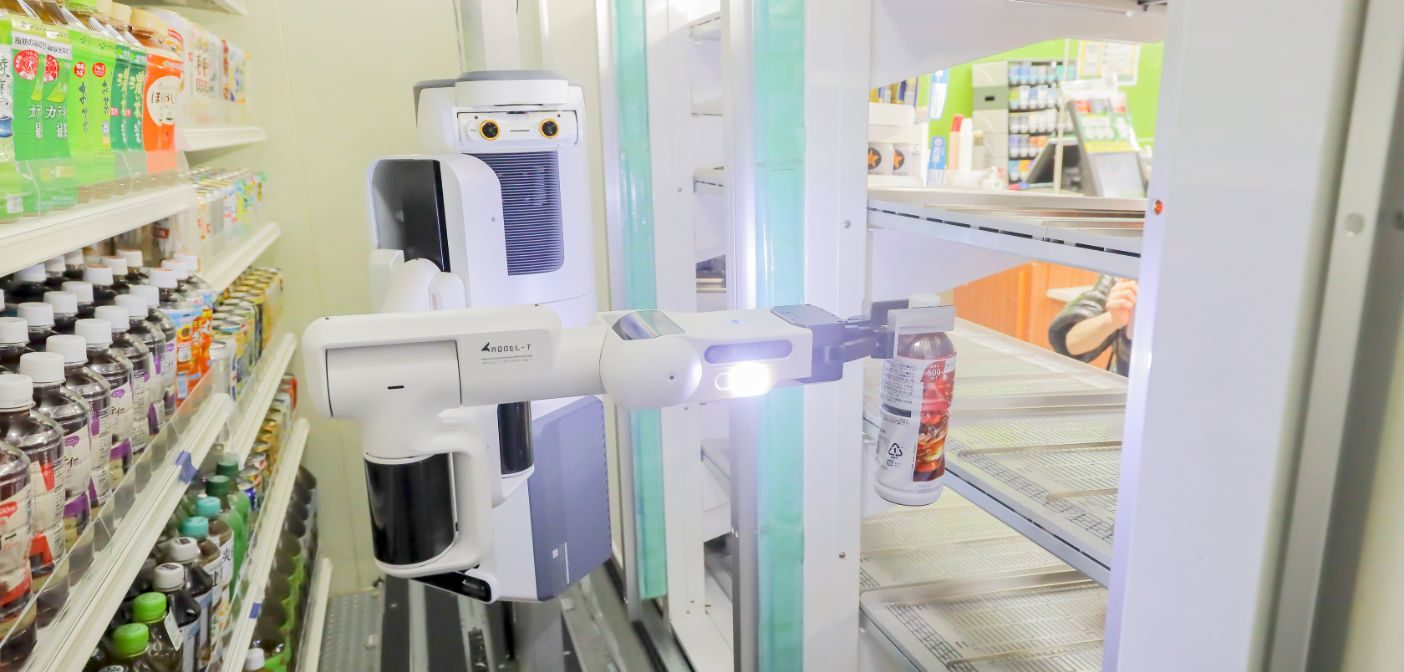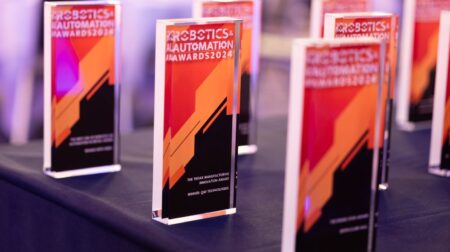Tokyo-based robotics startup Telexistence has announced it will deploy AI-powered robots to restock shelves at hundreds of FamilyMart convenience stores in Japan.
Starting this month, Telexistence will install its TX SCARA model at 300 FamilyMart stores, validating its AI-based ‘robot-as-a-service’ solution for grocery retailers, before bringing the autonomous machines to additional FamilyMart locations, as well as other major convenience store chains, in the coming years.
TX SCARA has been developed specifically to restock refrigerated shelves with bottles and cans. According to Telexistence, the solution can be in operation 24/7, replenishing shelves at a pace of up to 1,000 bottles and cans per day.
The robot runs on a track and includes multiple cameras to scan each shelf, using an AI system from Nvidia, known as ‘GORDON’, to identify drinks that are running low and plan a path to restock them.
The AI system can reportedly successfully restock beverages automatically more than 98% of the time.
however, should the AI encounter issues, due to miscalculation or external factors such as an item falling or being out of place, remotely located Telexistence employees using VR glasses can take control of the robot to correct issues across stores.
What’s more, TX SCARA’s cloud system maintains a database of product sales based on the name, date, time and number of items stocked by the robots during operation. This allows the AI to prioritise which items to restock first based on past sales data.
FamilyMart, which runs 16,000 of Japan’s 56,000 convenience stores, said it made the investment in TX SCARA in an effort to free up staff to tackle more complex tasks, such as interacting with customers.

Tomohiro Kano, general manager of store development and railway and corporate franchisee, FamilyMart, said: “The introduction of Telexistence robots into FamilyMart stores will eliminate the need for store employees to replenish beverages in refrigerators, and the newly created time can be reallocated to customer service and shop floor enhancement, leading to higher quality store operations.”
The initiative forms part of Telexistence’s aim of improving simple labour workflows with robots, which is based on a collaboration with Nvidia and Microsoft Japan.
Specifically, Nvidia GPU-accelerated Jetson edge AI technologies are embedded in hardware originally developed by Telexistence to provide AI and remote control of robots via Microsoft’s Azure platform.
“Currently, the greatest limiting factor for any industry, in any nation, is human resources,” said Jin Tomioka, CEO of Telexistence.
“Especially in developed countries like Japan, the shortage of human labour is rapidly becoming apparent in the retail and logistics industries, which support human life in society.
“We are promoting large-scale production and social implementation of our robots for industries other than factory automation, industries that function as the infrastructure for daily life in society.”
According to Telexistence, each TX SCARA robot can reportedly replace one to three hours of human work every day at a single store.
What’s more, the company plans to expand to convenience stores in the USA, and is reportedly also developing AI-based systems for warehouse logistics with robots that sort and pick packages.
R&I analysis: how the technology behind TX SCARA works
TX SCARA has multiple AI models under the hood. An object-detection model identifies the types of drinks in a store to determine which one belongs on which shelf. It’s combined with another model that helps detect the movement of the robot’s arm, so it can pick up a drink and accurately place it on the shelf between other products. A third is for anomaly detection: recognising if a drink has fallen over or off the shelf. One more detects which drinks are running low in each display area.The Telexistence team used custom pre-trained neural networks as their base models, adding synthetic and annotated real-world data to fine-tune the neural networks for their application. Using a simulation environment to create more than 80,000 synthetic images helped the team augment their dataset so the robot could learn to detect drinks in any colour, texture or lighting environment.
For AI model training, the team relied on an NVIDIA DGX Station. The robot itself uses two Nvidia Jetson embedded modules: the NVIDIA Jetson AGX Xavier for AI processing at the edge, and the Nvidia Jetson TX2 module to transmit video streaming data.
On the software side, the team uses the Nvidia JetPack SDK for edge AI and the Nvidia TensorRT SDK for high-performance inference.
“Without TensorRT, our models wouldn’t run fast enough to detect objects in the store efficiently,” says Pavel Savkin, chief robotics automation officer at Telexistence.
Telexistence further optimised its AI models using half-precision (FP16) instead of single-precision floating-point format (FP32).







